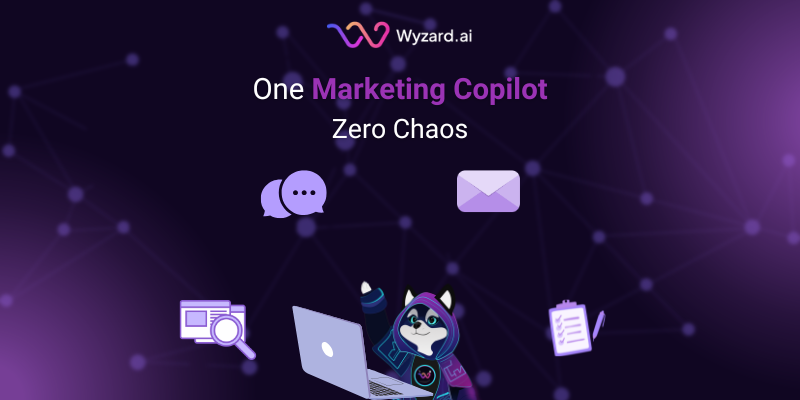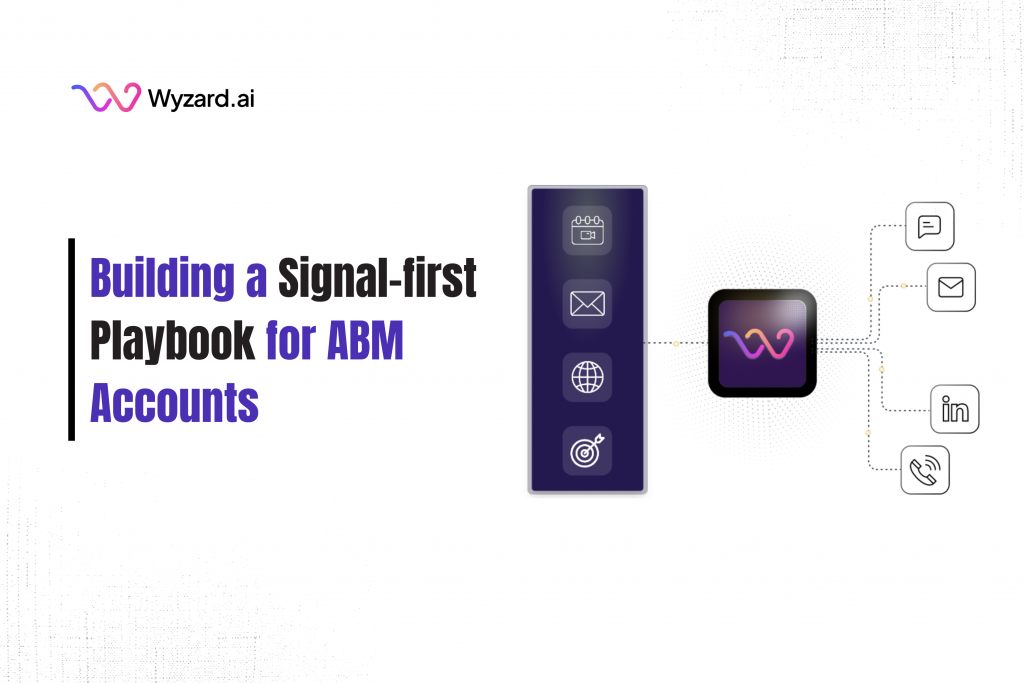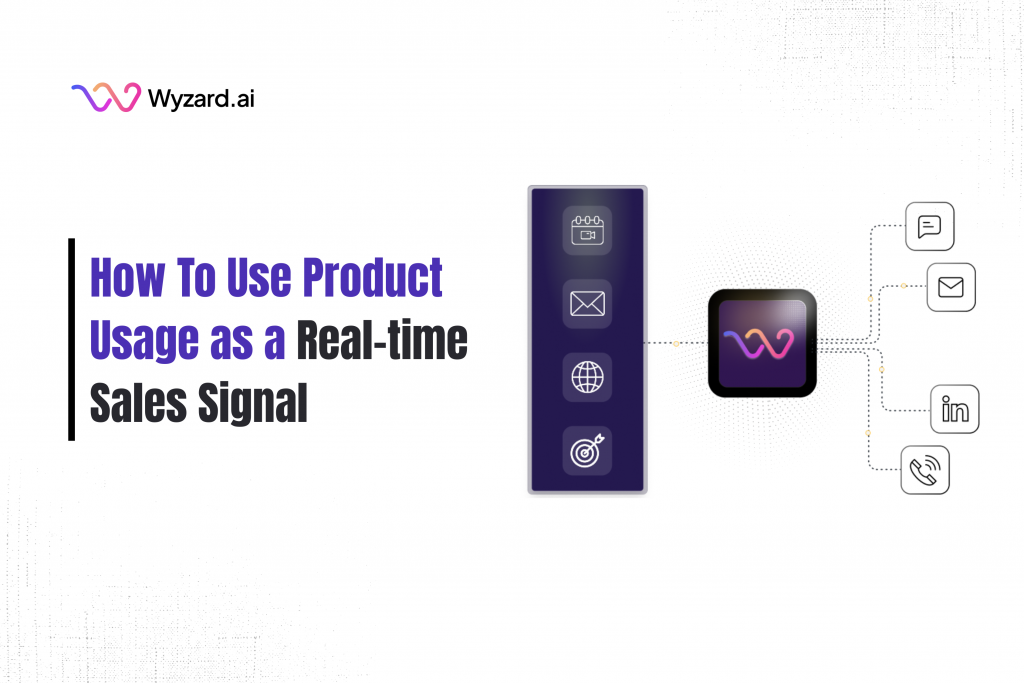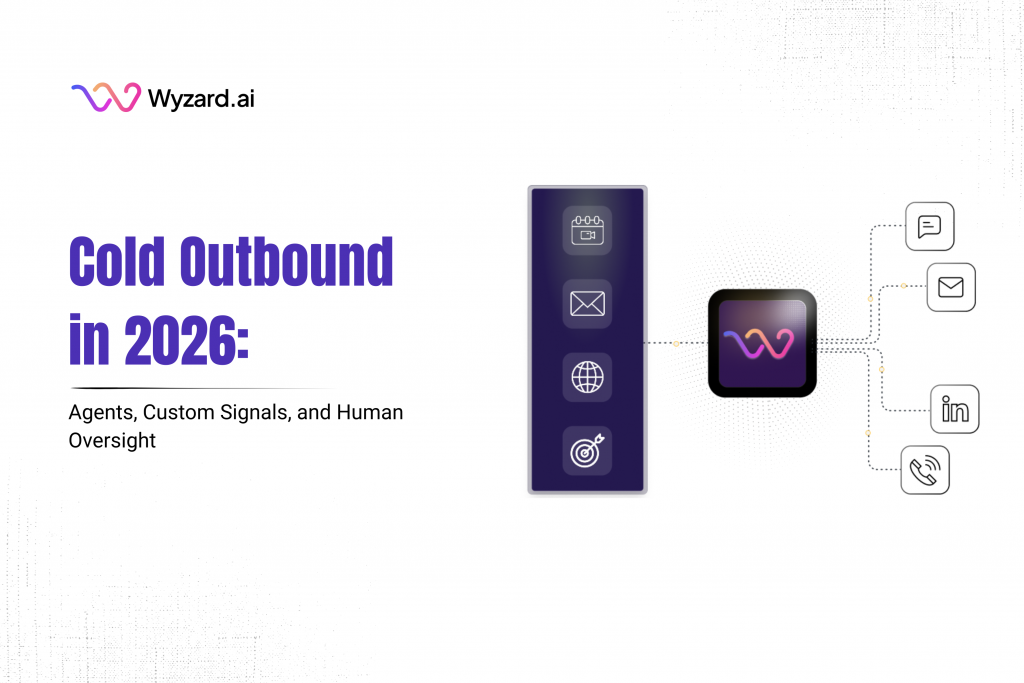If you run marketing or revenue for a B2B team, you probably care less about raw lead volume and ...

Subscribe Now
In 2025, B2B marketers are being asked to do more with less—less budget, fewer tools, and tighter alignment with sales. Sales tech stack consolidation isn’t just an IT play; it’s a strategic move to eliminate tool overlap, simplify workflows, and close revenue gaps. This blog breaks down how a streamlined stack powered by Wyzard’s Marketing Copilot transforms B2B GTM strategies from siloed execution to synchronized success.
The Era of Less, But Better
Marketing teams today are standing at a crossroads. On one side, there’s the growing complexity of the modern sales tech stack; on the other, the need for simplification, efficiency, and alignment with revenue outcomes. Organizations now use an average of 112 SaaS applications, and many GTM teams are realizing that tool bloat is doing more harm than good.
As the push for platform efficiency grows, marketers are increasingly pulled into a conversation once dominated by RevOps and sales leaders: tech stack consolidation. But this isn’t just an IT concern. It’s a strategic lever for marketers looking to align more closely with sales, improve conversion rates, and drive measurable pipeline growth. While simplification is key, it shouldn’t come at the cost of breadth – “Less tools, more reach” is the new call.
Why Tech Stack Sprawl Hurts More Than It Helps
Over the last decade, martech tools have exploded in both number and specialization. While this gave marketers powerful new capabilities, it also created overlapping functions, siloed data, and disconnected buyer journeys. According to Gartner, marketing leaders use only 58% of their existing martech capabilities. The rest? Often redundant or underutilized.
Beyond wasted spend, this sprawl creates operational friction. Leads get lost between systems. Attribution becomes murky. Campaigns suffer from inconsistent messaging and follow-up. For B2B marketers, this complexity makes it harder to do what matters most: convert interest into pipeline. It also leads to poor sales-marketing alignment, as teams debate over which metrics matter, where the data lives, and how to follow up with high-intent leads.
Sprawl isn’t just about tech—it’s about fragmented engagement. When chat tools don’t talk to email sequences, or when PPC leads live outside the CRM, you lose momentum. Wyzard prevents this by acting as a centralized engagement engine, ensuring every lead—no matter where they came from—gets timely, personalized follow-up across channels.
What Sales Tech Stack Consolidation Actually Looks Like
Consolidation doesn’t mean fewer tools just for the sake of reduction. It means streamlining around a core set of platforms that integrate deeply across the funnel, support real-time decision-making, and enable both sales and marketing workflows.
In practice, this is like replacing many disconnected lead engagement tools with one Marketing Copilot like Wyzard, which handles chat, email, and CRM actions. It means sunsetting legacy platforms that duplicate CRM or enrichment capabilities. And it prioritizes tools with native integrations to avoid duct-taped workflows. For marketers, participating in this process ensures that your campaigns don’t get lost in the shuffle. It also means better visibility into what’s working and faster feedback loops to optimize performance.
The Impact on B2B GTM Strategies
Here’s where the real shift happens. As marketing becomes more accountable for revenue, stack decisions have a direct impact on strategy. Consolidated stacks enable tighter sales-marketing alignment through shared systems and visibility. Sales sees what marketing is doing, and vice versa, which reduces friction and speeds up response times.
They also enable faster speed-to-lead. With fewer hops between tools, high-intent leads can be engaged in real-time. That means no more waiting hours for a form fill to sync across platforms. Unified data sets empower marketers to personalize at scale, targeting buyers based on behavior, not just firmographics. And with centralized data, attribution becomes clearer—finally answering the question, “Which campaign actually drove that demo request?”
Martech Consolidation: A Revenue Imperative, Not Just Ops Hygiene
The idea of martech consolidation often sounds like a back-office cleanup project. But in reality, it’s about revenue. According to Forrester, companies with tightly aligned sales and marketing functions achieve 32% higher revenue growth. That alignment doesn’t happen when each team is working in its own tool silo.
Marketers who get involved in tech stack consolidation conversations can influence platform choices that support campaign goals, ensure visibility into conversion metrics, and advocate for tools that enable, not just measure, buyer engagement.
Signs Your Stack Needs a Shake-Up
Not sure if it’s time to rethink your tech stack? There are a few clear red flags.You might need a consolidation strategy if:
- SDRs are copy-pasting lead data between tools
- Marketing can’t track follow-up on high-intent leads
- Sales claims “bad MQLs” despite strong signals
- You have multiple tools doing the same thing (e.g., enrichment or chat)
- No one’s sure where a lead actually converted
These aren’t just inefficiencies—they’re conversion killers. And in today’s GTM world, execution is everything.
Redundancy isn’t just about duplicate tools—it’s about missed handoffs across channels. If webinar leads don’t get follow-ups or event scans aren’t nurtured, you’re bleeding pipeline. Wyzard fixes this by offering intelligent, multi-channel follow-up that covers every gap—from the first click to booked demo.
The Role of the Marketing Copilot in a Consolidated Stack
This is where a true omni-channel Marketing Copilot like Wyzard becomes indispensable. Instead of layering yet another tool into a bloated tech stack, Wyzard becomes the engagement layer that connects all your revenue channels—from website visitors to webinar attendees, PPC clicks, live event leads, and even dormant CRM records.
Unlike single-threaded chatbots, Wyzard orchestrates engagement across chat, email, and CRM actions in real-time. It can:
- Engage high-intent website visitors via chat, then follow up with personalized email sequences.
- Trigger outreach to webinar attendees based on poll responses or content downloads.
- Route PPC landing page leads directly into the CRM with contextual nurture flows.
- Re-activate stale MQLs with multi-step email + chat workflows.
- Automatically log, score, and route leads with context-rich data—without human intervention.
The result? No channel gets siloed. Every lead—regardless of how they enter the funnel—gets intelligent, immediate, and personalized attention. Marketers gain a centralized view of engagement, while sales benefits from higher-quality, sales-ready conversations already in motion.
Wyzard consolidates execution, not just analytics—and that’s what moves the needle from insight to action.
Suggested Read: The Marketing Copilot Manifesto
Looking Ahead: What Marketers Should Do Now
If you’re navigating consolidation, here’s your action plan:
- Audit tool overlap: Map your stack. Flag redundancies. Ask, “Does this tool drive revenue?”
- Push for shared KPIs: Align around speed-to-lead and conversion, not siloed metrics.
- Make CRM the source of truth: Anchor campaigns in accurate, centralized data.
- Use your Copilot as the execution layer: Let AI drive follow-ups, routing, and nurturing.
- Measure business impact: Track demos, pipeline, and bookings—not just tool usage.
- Collaborate with RevOps: Early and often. Shared systems require shared strategy.
Suggested read: Big Impact, Small Team: 10 Lead Gen Tips for Lean Marketing Teams
Conclusion: Consolidation Isn’t the Endgame, It’s the Foundation
In a noisy landscape of tools and tactics, focus wins. For marketers, sales tech stack consolidation isn’t about shrinking influence. It’s about magnifying impact. By embracing martech consolidation and aligning around shared outcomes, marketers move from pipeline support to pipeline generation.
The takeaway? Simplify to amplify. Because the best B2B GTM strategies in 2025 won’t be built on bloated stacks—they’ll be built on clarity, coordination, and copilots.
Ready to See It in Action?
Take the first step toward stack efficiency and revenue growth.
Book a Demo with Wyzard to discover how our Marketing Copilot can streamline your tech stack, accelerate speed-to-lead, and convert more traffic into qualified pipeline.
Other blogs
The latest industry news, interviews, technologies, and resources.
How To Use product usage as a Real-time Sales Signal
If you lead growth at a PLG company, you already know the dream: the product does most of the ...

December 7, 2025
Cold Outbound in 2026: Agents, Custom Signals, and Human Oversight
Your SDR team has good data, a stack of sequences, and a modern engagement platform. The emails still feel ...

 We’ve secured funding to power Signal-to-Revenue AI to GTM teams globally. →
We’ve secured funding to power Signal-to-Revenue AI to GTM teams globally. →


